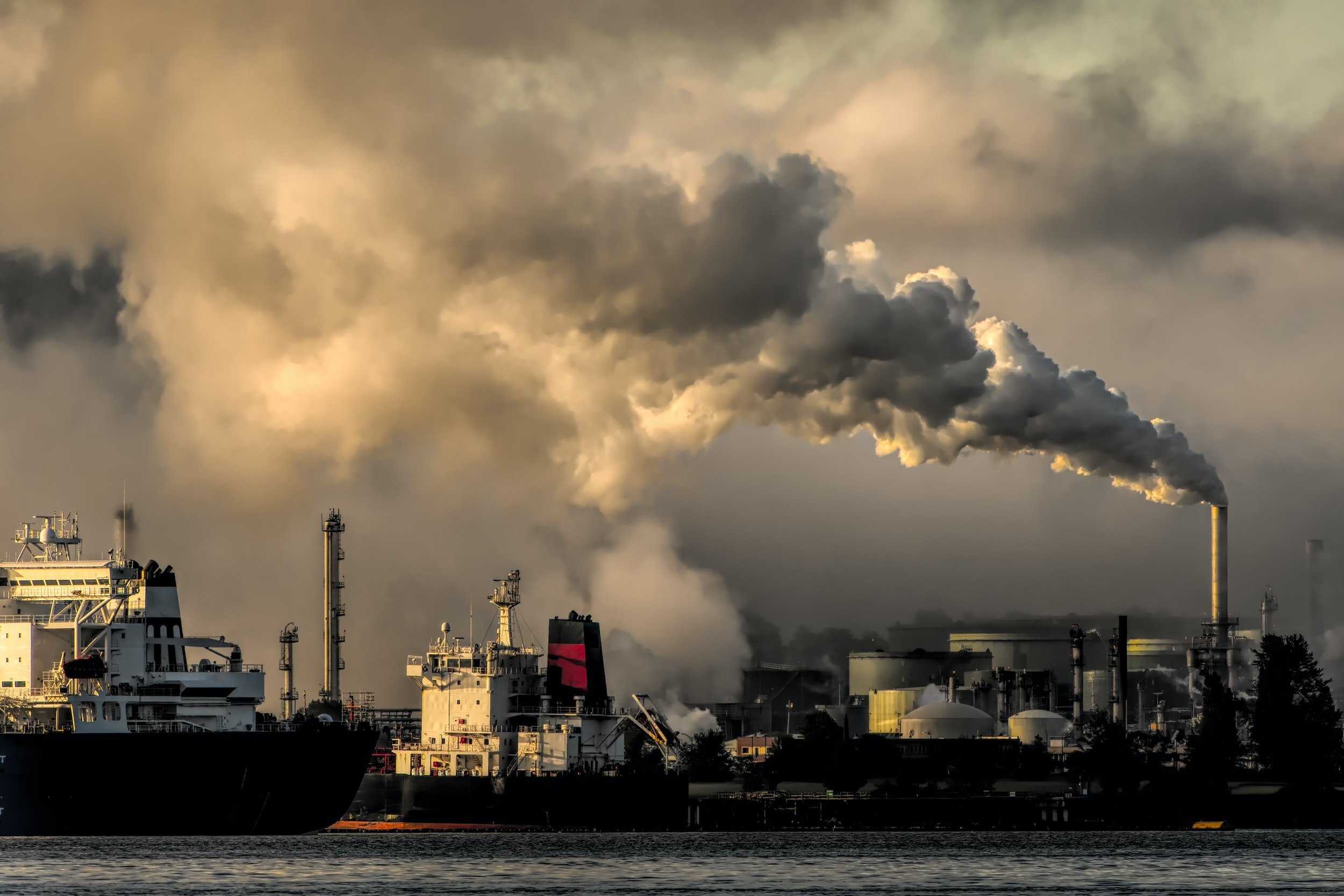What are carbon emissions and where do they come from?
Aria Soeprono
University of California, Los Angeles, Environmental Science Studies & Footprint App User Research
By now you may be familiar that carbon emissions are driving global climate change. But have you ever wondered how a gas could be so powerful as to change the world as we know it?
What are carbon emissions?
Carbon is everywhere; all living organisms are composed of carbon, and simply through breathing we exhale carbon. But while carbon as an element is not inherently negative, abundance of atmospheric carbon dioxide contributes to a warming effect.
This is known as the greenhouse gas effect, whereby certain gases (including carbon dioxide) in the troposphere trap heat below and prevent it from escaping to the upper atmosphere (U.S. Environmental Protection Agency).
This is not a new phenomenon- mass extinctions of the past have been linked to climate change through an abundance of greenhouse gases in the atmosphere (Wells, para. 9 and 10).
Yet, for the first time, humans, rather than an abundance of speciation or a multitude of volcanic eruptions, are forcing the climate from its otherwise stable, life-providing state, into a less hospitable planet by emitting carbon dioxide and other greenhouse gases.
And this human- caused increase in emissions is far greater than we have seen before, even in comparison to prehistory (Earth Science Communication Team at NASA). This is not an alarmist exaggeration, but rather a very real concern, as we are already seeing an unprecedented level of extinction well beyond the background rate, and only time will tell how long human resilience and ingenuity will resist the path that other large mammals on this planet are facing, which is to say, threat of dying out.
While extinction on mass scales is not unknown to this planet, it is unfamiliar to civilization, which has flourished under an exceptionally accommodating climatic conditions for all of human history.
Yet, to some surviving climate change means suffering through consistent deadly heat waves, more intense tropical storms, and starvation from collapsing food systems, among other dangers that are already being faced by people around the globe (Wells para. 13, 15, and 32).
For instance, the heat waves experienced by Europe throughout the last two decades, including the one in 2018, are predicted to occur perhaps even stronger, every two years going into the future (European Environment Agency).
Whether this is the first time this threat has been brought to your attention or just your most recent consideration of these climate trends, it is empowering to know that if society learns to reduce emissions now through lowering our relentless demand for energy, we can act together to halt, and perhaps even reverse, the threat of climate change.
What are the sources of carbon emissions?
Carbon emissions are released into the atmosphere either by natural or anthropogenic, human-caused sources. Natural sources of carbon release include volcanic eruptions, decomposition and decay of organic matter, and animal respiration and metabolic processes.
Forest wildfires are also a source of carbon emissions, but since climate change can increase the risks of fire, and humans can accidentally set fire to in dry locations through their actions, this source can be both natural and human-related (Loehman).
Anthropogenic sources mainly refer to the use of fossil fuels, which are really just prehistoric organisms made up of carbon that have been buried and compressed into oil deposits over millions of years. Fossil fuels are then extracted and burned to use as energy in the form of natural gas, coal, and oil.
Fossil fuels are known as non-renewable energy sources because it takes millions of years to form, well beyond the timeline of human life. Further, non-renewable energy is currently the most common power source for all of human society today, including transportation, housing, and manufacturing that supports our daily lives (Selin).
Therefore, almost every aspect of what you do can be linked back to carbon emissions in one way or another. Even eating food is related to carbon emissions, because of the energy it takes to run tractors and other heavy machinery to cultivate crops, as well as all of the energy that goes into producing livestock to eat (Selin).
While eliminating human sources of carbon emissions entirely is an impossible feat, transitioning to renewable energy sources like solar and wind while simultaneously reducing overall energy demand could have a significant benefit for our climate.
Sources:
Earth Science Communication Team at NASA. (2021, February 19). Carbon dioxide concentration. Retrieved April 02, 2021, from https://climate. nasa.gov/vital-signs/carbon-dioxide/
European Environmental Agency. (2020, September 30). Global and European temperature. Retrieved April 02, 2021, from https://www.eea. europa.eu/data-and-maps/indicators/global-and-european-temperature-9/assessment
Loehman, R. A. (2020). Drivers of wildfire carbon emissions. Nature Climate Change, 1-2.
Selin, N. (n.d.). Carbon footprint. Retrieved April 02, 2021, from https://www.britannica.com/science/carbon-footprint
U.S. Environmental Protection Agency. (2020, September 08). Overview of greenhouse gases. Retrieved April 02, 2021, from https://www.epa. gov/ghgemissions/overview-greenhouse-gases
Wells, D. W. (2017, July 10). When will the planet be too hot for humans? Much, much sooner than you imagine. Retrieved April 02, 2021, from ht tps://nymag.com/intelligencer/2017/07/climate-change-earth-too-hot-for-humans.html
———
Hope you liked the article! ✌️
If you liked the article we would appreciate it you share it with friends or family to raise awareness.







